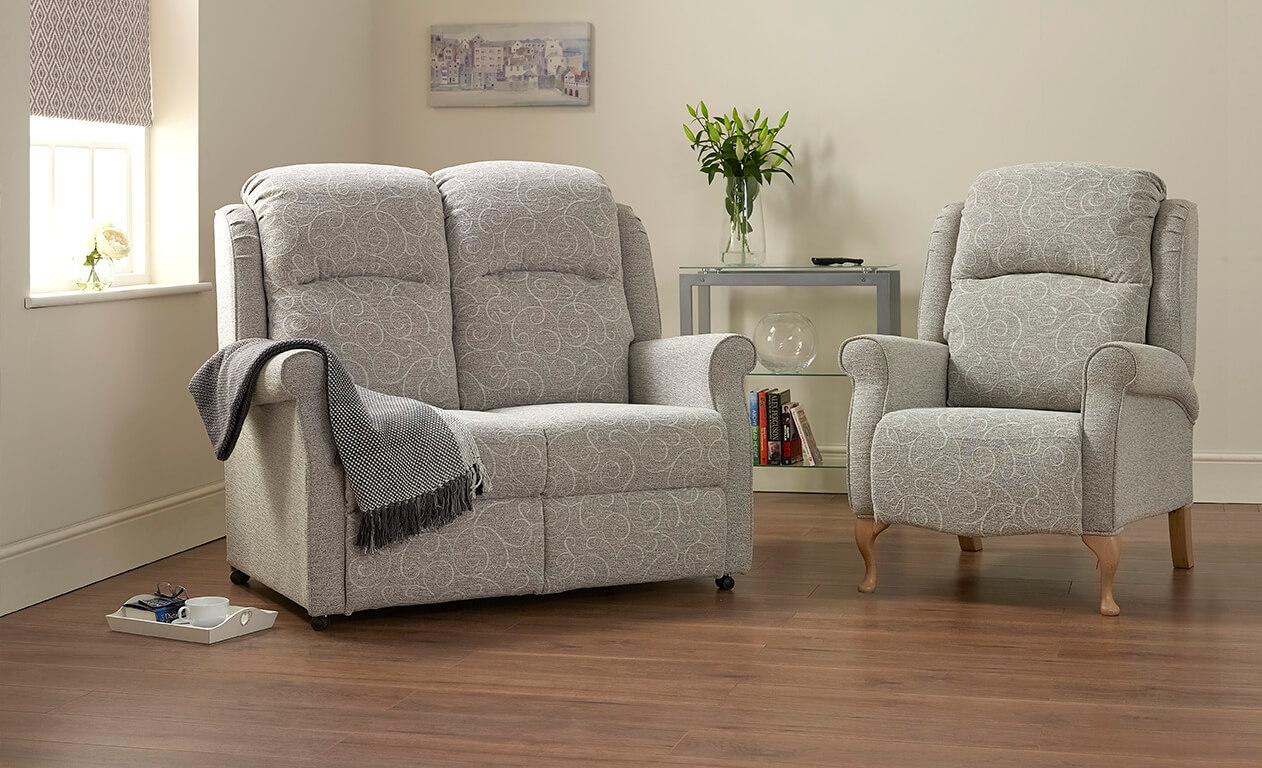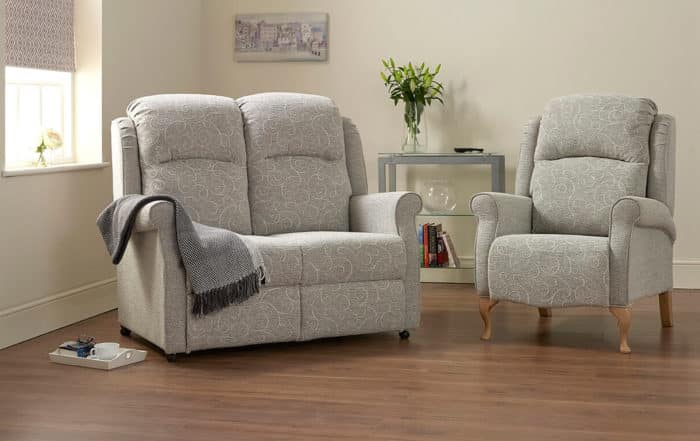12 Ways to Make a Sofa Bed More Comfortable
Social Links
Travel, communication, ecommerce – a long list of industries have improved and advanced in recent years, and in doing so have made our lives considerably easier.
Another sector that may not be as obvious but has come on just as much is that of the bed industry.
As we spend up to a third of our lives in bed, it makes sense that we should invest in a good one. But what if we need a temporary or more versatile solution?
Most of us have experienced sleeping on an uncomfortable sofa bed at least once in our lives, probably as a guest in someone else’s house.
But with modern advancements in bed and mattress construction, and the popularity of sofa beds as high as ever, why shouldn’t a fold out bed provide just as good a night’s sleep as a permanent one?
Benefits of sofa beds
Some of the benefits of a sofa bed are obvious. For a start, they can instantly turn a lounge or living room into an extra bedroom for having family or friends over, either for a holiday or to save the necessity of driving home after a party.
They can also serve as a day bed for someone who likes to nap in the afternoons, or make an extra-comfy surface to watch a movie on or wait out a cold or flu.
Until recently, it has been generally accepted that this is all a sofa bed is good for. But modern improvements such as better frames, more supportive mattresses and electric motors make them much more suitable for regular use.
For those encountering temporary mobility issues, such as during recovery from injury, surgery, illness or an accident, having a fold-out bed on the ground floor is an ideal solution. Not only does it save a trip up and down the stairs, it can also spare a partner from disturbance during the night.
Sofa beds for everyday use
These same advancements mean there’s no reason why someone with a long-term impairment shouldn’t use a good quality sofa bed for permanent sleeping. It may also provide a perfect solution for someone with limited space, perhaps because they’ve moved in with relatives or into a shared facility where they only have one room that’s their own. With a sofa bed, the space can be transformed from a sitting room to a bedroom and back again as often as needed.
Another new development in sofa bed technology is the electric motor, ideal for people with arthritis, the elderly or anyone lacking upper body strength.
An electric sofa bed can be set up and packed away with the touch of a button, saving the back and joints from extra strain. To make things even easier, the seat and cushions are incorporated so there’s no need to remove them first, and the motor is quiet enough to be used while other people are still asleep.
How to make a sofa bed more comfortable
Despite being much better than their historical counterparts, sofa beds are still different from your regular bed and unfamiliarity can impact on your quality of sleep.
Fortunately, there are a few easy steps you can take to prolong the life of your sofa bed, as well as make it more comfortable:
1. Use a good quality pillow
Whilst it’s tempting to use the sofa cushion or grab a throw pillow from an armchair, these probably won’t provide adequate support for your neck or spine and may interfere with your sleep.
Instead, bring your pillow down from the bedroom or invest in another one specifically for the sofa bed. Your ideal pillow may depend on your sleep style, but it should be made of memory foam or some other supportive material.
2. Couch cushions can take a supporting role
Couch cushions, and any other decorative pillows you can find, are great for filling in any gaps around the bed frame. This will prevent things from falling into them, such as your main pillow or items such as books or phones which can be tricky to retrieve. Extra cushions and pillows can also be used to prop yourself up if you want to read or sip a cup of tea.
3. Use a mattress topper
The Mobility Furniture Company’s sofa beds come with a high-quality pocket sprung mattress which already provides good support. If you’d like to enhance this support further, a 1.5- to 2-inch memory foam topper will take pressure off your joints, especially if you’re a side sleeper, and add a little extra warmth.
If you do not have a mattress topper, or you need to use the bed while the topper is being washed, try sleeping on top of an extra duvet – just tuck it under the same bottom sheet as the mattress to keep it from moving around. Using a mattress topper will also extend the life of the mattress.
4. Clean the mattress and topper every month
People naturally shed hair and skin cells when they sleep, and along with dust, pet hair, mites and crumbs, this can accumulate in the mattress. To keep minor natural debris at a minimum, vacuum and air the mattress regularly and wash the topper according to instructions.
Don’t let either get too wet, and if they do dry them as soon as possible to keep bacteria or mould from building up. These methods will keep the air around the bed cleaner and will contribute to a better night’s sleep, especially for people with allergy and asthma.
5. Flip the mattress regularly
Flipping and turning the mattress prevents wear and tear and keeps it from sagging in a concentrated area, particularly if you’re a side sleeper or like to sit up in bed. New mattresses should be turned once or twice a year, then up to three or four times as they gets older.
6. Treat metal parts with oil to prevent squeaking
Being afraid to move because you’re lying in a squeaky bed is almost guaranteed to keep you awake all night! If your sofa bed is getting a little noisy, check it for lose bolts and tighten them if necessary.
You could also try wedging small pieces of cork into noisy joints – trimming a piece from a wine bottle cork works fine – or use a lubricating oil such as WD-40. This should also prevent rust and prolong the life and quality of the bed.
7. Replace the mattress when it’s worn out
A good sprung mattress should last at least five to seven years, although heavier users may find the springs wear out sooner than that.
A few signs will suggest it’s time to change your mattress. If you wake up with aches and pains, can feel your partners movements a lot or notice a squeak that’s coming from inside the mattress, then it’s likely its time is up.
Side sleepers may also find it starts to sag around the hips and shoulders, and if flipping or turning doesn’t help that’s another indication that you need a new one.
8. Consider the colour of your room and bedding
Most sofa beds are kept in living rooms, which may have considerably different décor to the bedroom. It may not be practical to redecorate a room for a temporary sleeper, but you can easily choose the colour of your bed linen.
Many studies suggest that cool colours such as blue, green and white have a calming effect and help sleep, while reds, purples and yellows are more stimulating and can make it harder to settle down. You can also add a warm white or yellow toned lamp to make a room more cosy and help your brain move from active to sleep mode.
9. Choose an appropriate fabric for your bed linen.
When choosing your bedding, be sure to consider the type of fabric. Wool is warm and durable and may be a good choice for a cooler room, or if the user may spend time sitting on top of the blankets.
Cotton is soft and comfortable, but holds moisture, so may not be ideal for a bed used for eating and drinking. Linen absorbs moisture and is bacteria resistant, but is not as warm. It’s likely that your lounge or living room will be warmer or cooler than the bedroom, so take that into account when choosing your fabric.
10. Eliminate disturbances
Chances are your lounge room probably doesn’t feel much like your bedroom. For starters, it probably has more electronic devices with stand-by lights, so consider covering them up or switching them off at the wall at night.
If there’s no place for a lamp next to the bed, consider a sensor light for when you have to get up in the night. If the lounge looks out onto a road or your neighbours’ outside lighting, consider noise and light insulating blinds or curtains.
11. Make things more familiar
Studies have shown we don’t sleep as well when we’re in an unfamiliar place. This is because half our brain instinctively stays partly awake to watch out for danger. Combat this by making the sofa bed feel more like your own – use familiar sheets or bring down a couple of things, like a photo frame or book, to place next to the bed.
Fortunately, after one night the survival instinct to stay awake is gone, but it won’t hurt to have your personal items nearby to make you feel more at home, especially if you’re going to be using the sofa bed for a while.
12. Choose a sofa bed with a warranty
All of The Mobility Furniture Company’s mechanised products – including the Electric Sofa Bed – come with a five-year warranty, free of charge. Knowing that you’ll be covered if there’s a problem or failure is bound to give you sweet dreams!
The bottom line
Sofa beds have always had a place in our lives: to turn a dinner party into a sleepover, to tempt us into an afternoon nap, or to enable us to say yes to that extra relative coming over for Christmas. Sadly, these memories are often associated with lumpy mattresses, sharp springs or feet hanging off the end, and usually don’t end with waking up feeling refreshed.
Fortunately, technological advancements mean that these stereotypes can be banished to the past. Modern sofa beds are made with more robust frames, high-quality mattresses and electronic mechanisms which mean that not only do they last longer, but can be used temporarily, or permanently, by anyone.
*This website contains general medical information. The medical information is not advice and should not be treated as such. Read our full Medical Disclaimer here.



